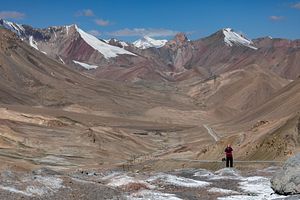Mainstream media coverage of Tajikistan is patchy, puts emphasis on geopolitics, and is often limited to incidences of violence. For instance, in July 2018 a deadly, Islamic State-inspired attack on foreign cyclists put Tajikistan in the headlines of various international media. In 2015, armed conflict between government forces and a group surrounding the deputy defense minister gained attention, and in 2012 open fighting between the Tajik army and militias of former opposition commanders in the Pamir region raised widespread concern. However, the less visible events and processes that inform these violent incidents, often reaching much further into Tajikistan’s past, have received little recognition internationally. News reporting often leaves the broader audience with stereotypical views of Tajikistan as being under threat by Islamic terrorism and separatism.
Continuing unrest in the Pamir region – officially known as Gorno-Badakhshan Autonomous Region (GBAO) – has, too, been subject to such misrepresentation. In the Pamir region, which makes up 45 percent of Tajikistan’s territory but only about 3 percent of its population, conflict between the central government and former opposition commanders has occurred on a regular basis since the Tajik civil war of 1992-97. Attempts to explain this conflict have drawn on diverse factors. Some media have mistakenly identified Pamiri militias as Islamist fighters, mixing up their former civil war alliance with the Islamic Renaissance Party (IRPT) with their actual political standing. Other coverage has overemphasized local opposition against the central government and people’s readiness to take up arms. Furthermore, drug trafficking and related business at the region’s southern border with Afghanistan have been mentioned as causes for unrest. While some of these factors are clearly important to understand the ongoing conflict, they have rarely been looked at in all their complexity and against the backdrop of the region’s history, which reveals longlasting, but ambivalent relations with the state.
Since 2012, discontent has increased in the Pamir region, and the conflict between former Pamiri opposition commanders who were integrated into the Tajik army after the civil war and the government in Dushanbe remains unresolved. While the armed actors are in a stalemate, street protests and political rhetoric are now at a boiling point.
































